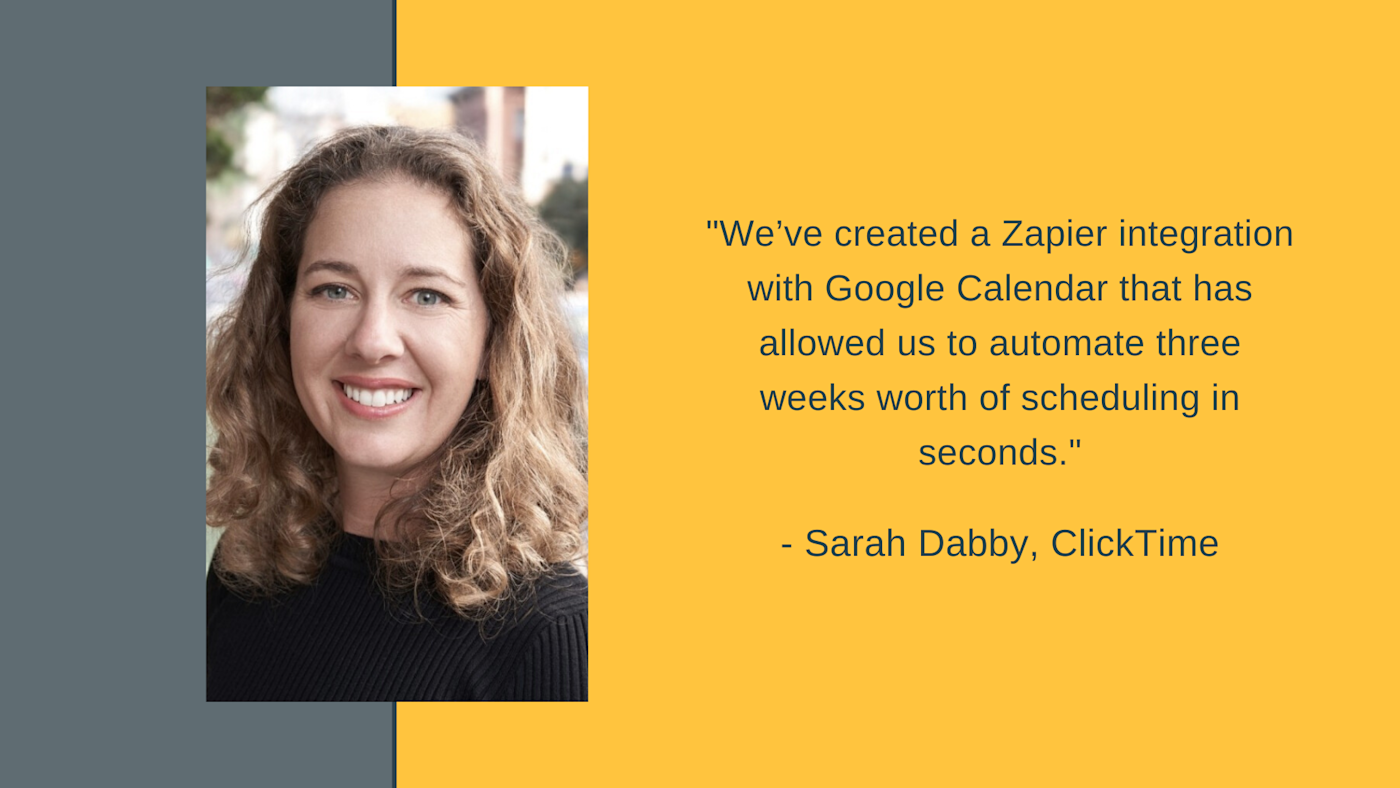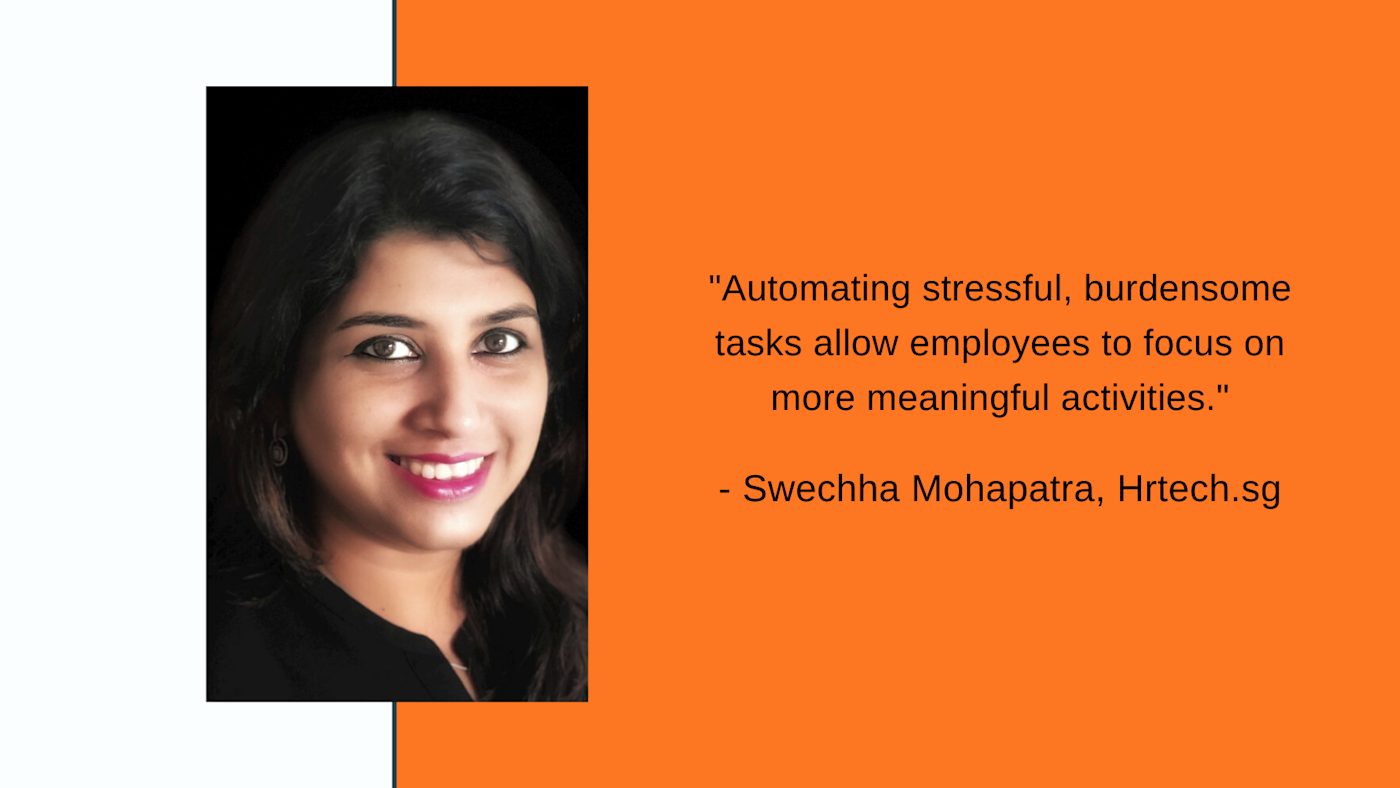Automation plays a major role at Terkel. From selecting expertise for our articles to notifying contributors when they’ve been published, automation has helped us continue to innovate while keeping costs low and employees focused on critical business-building activities.
5 things you should automate today
To help you gain insight into how other businesses are leveraging automation in the workplace, we asked HR leaders and CEOs the question: What is one way to leverage technology and automation to keep people focused on the work that only you, as humans, can do?
Here are their answers.
-
Reduce administrative hours
-
Automate onboarding administration
-
Embrace automation for social media recruiting
-
Automate candidate outreach and follow-up
-
Identify which tasks can be automated (and which can’t)
-
Automate project status updates
-
Manage inclusivity and sentiment analysis for communicators
-
Leverage technology for employee wellness
-
Highlight collaborative intelligence (fusion skills)
1. Reduce administrative hours
“Automating rote tasks frees up employees to do more creative and critical labor. For example, we use Zapier to report payments and refunds to a specified Slack channel, which frees up internal teams to interact with clients and decide how best to spend the company budget. Similarly, we automate regular processes like weekly employee self-assessments to automatically report to a spreadsheet so that managers can spend more time coaching and supporting teams rather than collecting and organizing data.
We are sure to communicate to our employees that we do not doubt their abilities to do these tasks and want to make the best use of their time. Automating these systems reduces delays and errors and gives our staff more space to create and innovate. Most workers are grateful to be free from monotonous duties, especially during hectic weeks or seasons.”
Tasia Duske, Museum Hack
2. Automate onboarding administration
“At ClickTime, designing a world-class employee onboarding program is a top People Ops priority. Great onboarding not only improves ramp time, but also sets new hires up for success in ways that positively impact our retention, profitability, and revenue. In order to focus our time on designing onboarding content, as opposed to scheduling, paperwork, and other administrative efforts that can bog us down, we’ve created a Zapier integration with Google Calendar that has allowed us to automate three weeks’ worth of scheduling in seconds. In addition, we’ve automated collecting documentation and signatures through our HRIS. This has saved us hours of time per hire and allowed us to focus our time on needle-moving onboarding efforts.”
Sarah Dabby, ClickTime

3. Embrace automation for social media recruiting
“Recruiting has never been harder. To stay competitive and top of mind with the best candidates, HR and talent acquisition professionals need to be smart about what they automate to not only save time but also attract both exponentially more and better quality candidates. Hiring is a social process, so it’s important to invest in the right automation that can scale your recruitment reach and messaging without sounding robotic.
Social media recruiting is one of the areas that can make or break your recruiting strategy and can benefit greatly from automation. Get it wrong, and you could add months of work on your team and miss out on the talent you deserve. But get it right, and you could save nearly a thousand hours a year while also attracting tons of applicants—time better invested by actively (and humanly) engaging with candidates during the hiring process.”
Debora Roland, CareerArc
4. Automate candidate outreach and follow-up
“Where technology and automation can help is with repetitive, manual processes like candidate outreach and follow-up. It takes a lot of time and mental energy for recruiters to manually send out follow-up emails to job candidates: setting a reminder, creating the email, and hopefully, personalizing it a bit. This can take, at minimum, five minutes per email.
Recruiting automation platforms allow hiring teams to set up engagement sequences for open roles that go out at a specific candace. This one step can save hours a day, so recruiters can focus their attention on interviewing and getting a read on what candidates are really thinking—which definitely something only people can do.”
Andres Blank, Fetcher
5. Identify which tasks can be automated (and which can’t)
“Automation can support your employees by taking on tasks that don’t need a human touch so that they can focus on those tasks that do. But it’s important to determine which tasks can be automated. Tasks that need to be done more than once and are done the same way every time are good tasks to automate.
Some communication tasks, such as email marketing or reminders can be easily scheduled and automated. In some cases, content creation can be automated but would require a human employee to look over and approve. For ideas about when to automate a task, talk to your employees. They may have good ideas for which tasks automation can help them and where automation might make their jobs more difficult.”
Dave Rietsema, Matchr
6. Automate project status updates
“Workflow automation has helped us create a better system across every team in our business, thanks to project management software and instant status updates. We use it in everything from HR and marketing to sales, IT, and accounting. Automating many of our communications by updating a single project status rather than digging through emails, sending multiple messages, and hoping the recipient sees it has helped reduce expensive delays and performance errors. Plus, our team feels more connected than ever. We’re watching them be more engaged with the work and go above and beyond for our clients, with much of their role’s weight lifted thanks to automation.”
James Diel, Textel
7. Inclusivity and sentiment analysis for communicators
“Communications technologies have come a long way, but creating engaging and appropriate content is still something that people do best. In the past, the creation of communications within an organization has been limited to just a few people with the right kind of training and motivation. This has been problematic because there are huge reserves of subject knowledge that are untapped. People may know their own subject area but feel uncomfortable with writing and publishing to a broad audience.
One recent communication automation that I think will empower content authors within any organization is AI-powered inclusivity and sentiment analysis. These tools perform automated checks of written language and offer suggestions about language based on whether the wording might be non-inclusive and if the tone can be considered positive or negative. Over time, these features help authors to naturally write in more inclusive, positive ways and give them greater confidence to contribute.”
Scott Hitchins, Interact
8. Leverage technology for employee wellness
“Employee burnout has been on the rise, and organizations are grappling with how to deal with the next ‘pandemic of mental health’ that is having a critical impact on company performance, revenue, and productivity.
The increasing focus on employee wellbeing has given HR teams a challenge and an opportunity to improve their employee wellness programs and invest in wellbeing technology solutions to create a substantial positive impact.
Reimagining business processes by leveraging technology and automation can improve employee productivity and efficiency. Organizations can design new processes embedding technology into key moments-that-matter by automating stressful, burdensome tasks allowing employees to focus on more meaningful activities.
Leveraging technology for mental wellbeing not only generates substantial results, but a significant return on value (ROV) from improved productivity and a seamless employee experience.”
Swechha Mohapatra, hrtech.sg

9. Highlight collaborative intelligence (fusion skills)
“To leverage technology and automation to keep people focused on the work that humans do, leaders must highlight the importance of collaborative intelligence and encourage employees’ professional development with ‘fusion skills’ that allow people to work effectively at the human-machine interface.
In the future, company functions will be redesigned around the preferred outcomes of reimagined operations, and companies will increasingly be organized around various types of skills rather than around strict job titles.
People should learn how to delegate tasks to the new technology, just as doctors learned to trust technology by reading X-rays or MRIs. Employees must be able to teach intelligent agents new skills and train them to perform well within AI-enhanced processes, for example, knowing how to put questions to an AI agent in the most rewarding way. Lastly, employees must ensure companies’ AI systems are used responsibly, i.e., do not violate legal or ethical boundaries.”
Gosia Hytry, Spacelift
This was a guest post from Terkel. Terkel creates community-driven content featuring expert insights. Sign up at terkel.io to answer questions and get published. Want to see your work on the Zapier blog? Read our guidelines, and get in touch.
[adsanity_group align=’alignnone’ num_ads=1 num_columns=1 group_ids=’15192′]
Need Any Technology Assistance? Call Pursho @ 0731-6725516







